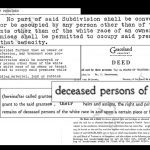Spring Cleaning
 Sometimes it’s squirreled away in closets, attics, and basements, or allowed to collect in plain sight. Wherever it lands, clutter is no one’s friend. Having more stuff than we want or need is a burden, making it hard to stay focused on what is useful and pertinent. Clutter can dim the sparkle of anyone’s existence.
Sometimes it’s squirreled away in closets, attics, and basements, or allowed to collect in plain sight. Wherever it lands, clutter is no one’s friend. Having more stuff than we want or need is a burden, making it hard to stay focused on what is useful and pertinent. Clutter can dim the sparkle of anyone’s existence.
Our lives are so busy and prone to clutter that an entire industry has taken root, supporting professionals who promise to coach us into organized lives. For do-it-yourselfers ready to take on their clutter, web sites can act as a resourceful advisor. Unclutterer.com will send free monthly organizing tips, and has links to services, products and support groups.
But the challenge of clutter is not unique to the modern era. In the Far East, the creation of well-ordered and peaceful environments has been a topic of study for thousands of years. In China, this inquiry is called Feng Shui, which literally means wind and water. In their flow over the natural world they model the desirable movement of energy, or chi, in human-made environments. The Chinese believe chi to be the invisible life force that emanates from and radiates through everything. Just as acupuncture, by altering the flow of chi, can reduce pain and improve health, Feng Shui can correct and harmonize the flow of energy in an environment.
Clutter’s negative influence is impossible to avoid. Facing an out-of-control closet or kitchen every morning will dampen anyone’s fresh and energized outlook. In “Clear Your Clutter With Feng Shui” Karen Kingston writes, “Any kind of clutter creates an obstacle to the smooth flow of energy around a space … this in turn creates stuckness and confusion in the lives of the occupants.”
Westerners easily relate to the Feng Shui concept of the “Command Position.” In key areas where we spend a lot of time, such as at the desk, the stove or in bed, it is best to face the door. According to Tollefson, “With your back to the door, your subconscious is preparing for an interruption, or something to happen. If you’re worried, you feel vulnerable and not supported by your space.”
Feng Shui recognizes that homes, like people, change with the times; and your home can support you during times of change. Tollefson says, ”You want your home to support what you’re trying to do and what you’ve done. It is important to keep it growing; it is in transition just as you are.”
Kathi Miller, the “Clutter Coach,” also sees wisdom in welcoming change, but with a calm center. She says, “Everyone runs into bumps along the road of life. If your life is pared down, it’s easier to navigate those bumps and regain your momentum. The more complicated your life is, the more urgently you need to take control of your belongings and your habits. … As the Chinese proverb warns, ‘Everything you own speaks to you, be sure it has something nice to say.’”
Where to begin?
Everyone would like to feel peaceful, positive and secure in their space, but clearing out a sizeable accumulation of clutter is a daunting proposition. Good first steps are important, because they encourage resolve to build rather than fade. Here are some suggestions for beginning the process:
Step One: Get started. Start small, but START.
Miller says, “People with clutter are often perfectionists. They are waiting for the “perfect” conditions to deal with their clutter – the right colored bins, the weekend with no interruptions, the phase of the moon, etc. Perfect isn’t real life! Resist your perfectionist tendencies and start today.”
And by taking those first steps, we are encouraged by our progress to keep going. In her book, Kingston writes, “Without a doubt, the hardest part is actually overcoming your inertia enough to get started. Once you have begun, the process itself releases more energy to enable you to continue. All the stagnant energy that is locked up in the clutter gets released for you to use in more positive ways.”
Because people spend so much time there, ‘Command Positions’ are good places to begin removing clutter and making other improvements.
Step Two: Establish and maintain a decluttering habit.
Adopting a new habit is the prelude to maintaining the new habit. With resolve, clutter can be defeated, but without a change in the habits that allowed it to collect, it will accumulate again.
Paper may be the most challenging form of matter to get and keep under control. It is insidious. It comes in the mailbox, gets sent home by teachers, and conveys the fruits of labor. Paper piles up like seconds ticking on a clock, and can morph into clutter at the blink of an eye. Barb Friedman, of “Organize IT” in Milwaukee, is a certified trainer who organizes homes and workplaces, including out-of-control paper trails. She says, “Clutter builds up because people have not made a decision: they’re not sure what to do with it, they’re not sure where it goes, and fear if they put it away, they may never see it again.”
Before they set up a home office, Friedman advises her clients to carefully evaluate both their space and their needs. Her home office design process can be applied to almost any matter-management goal:
“One: Assess the space. Think about what kind of work you do, and what it is you want. Note what equipment and materials you use all the time. With a limited area, don’t overlook vertical space that can accommodate a floor-to-ceiling bookcase.
“Three: Create a System. You want to set up habits and behaviors that will support you in your work. For example: File don’t Pile. Handle each piece of paper once. By processing mail every day into FAT categories (File, Act or Toss) you save time and prevent paper from piling up. Commit to making the system a habit.
“Four: Needs and goals change. A system is not written in stone. If it isn’t working, go back and ask what isn’t working and why. Be willing to make little changes, to tweak the system rather than abandon it.”
Like any positive change, getting rid of clutter can result in benefits both predictable and surprising. Getting an external world in order can lead to healthy change in the minds, bodies and spirits of those who dwell there. As it is with life, our environment is a work in progress.
Location, location, location!
According to the rules of Feng Shui, the effects of clutter vary depending on where it is. Owner of Feng Shui Design in Milwaukee, Pam Kai Tollefson offers this insight:
“Clutter at the main entrance affects present possibilities, in the basement influences the subconscious, in the attic impacts future possibilities; and behind doors restricts you and gives you a pessimistic approach to the world.
“Clutter too low drags you down, while clutter too high, such as a tall overcrowded bookshelf, tells you you’re in over your head, and are waiting for things to fall on you.
“The clutter of things once important in a different period of your life keeps you dwelling in the past.”
Resources:
Barb Friedman of “Organize IT” can be reached at 414.351.8420. Sign up for her free e-mail newsletter at www.organizeitbiz.com.
Kathi Miller, the “Clutter Coach” can be reached at 262.681.5703. Sign up for her free e-mail newsletter by e-mailing.
Pam Kai Tollefson of Feng Shui Design can be reached at 414.228.9877 or via her web site: www.fengshui-design.com.
By Anne Sylvan





















